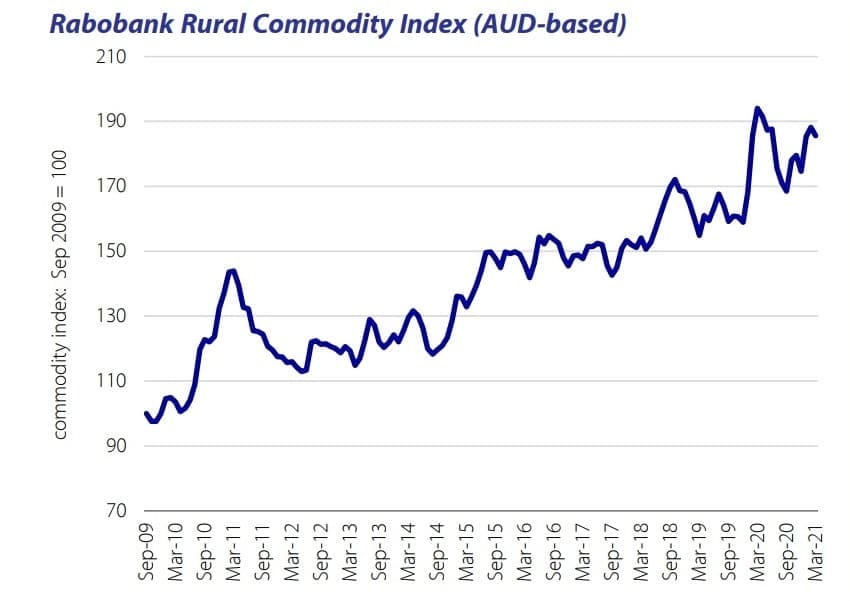Rural lender Rabobank expects that 2020 will have been the sixth consecutive year of agricultural land price growth in Australia, which according to ABARES data, represents a 41 percent increase nationally over the six-year period.
And with most agri commodity prices also trading at or near record highs, Rabobank’s April Agribusiness Monthly looks at whether prices are sustainable at these levels or if farmers and graziers should plan for price downside in 2021.
“While land price growth has been sharp, and strong, we expect prices are sustainable at these levels, with a downward correction very unlikely,” Rabo concluded in its report.
In the short term, the fundamentals of the land market remained extremely strong, the lender said, suggesting that there were three main drivers of land prices:
- Interest rates
- Productivity (output and costs) and
- Commodity prices.
The explanatory power of these variables varied by commodity type, Rabo’s senior agricultural analyst Wes Lefroy said.
“For example, for cropping lands, these three variables achieved an r2=0.87 with land prices over the last 30 years.

Wes Lefroy
“Over the past six years, nationally, these fundamentals have been the most supportive they have been over the last 30 years. The cost of funding remains at the lowest point on record, the Rabobank Commodity Price index remains at its highest point on record, and production levels in 2020 were well above average,” he said.
With a medium-term lens, Mr Lefroy said a key question remained: Have land prices over-shot productivity?
According to analysis Rabo completed with Digital Agriculture Services, the price per unit of productivity (NPP) had nearly doubled in some region of Australia from 2012 to 2019, indicating that land prices had been growing much faster than productivity.
“Theoretically, if the price of land has outstripped productivity growth, it may imply land is over-valued,” Mr Lefroy said.
“However, it is important to recognise that pure returns aren’t the only reason for buying. For example, in many regions, large farmers and graziers now border each other, and are willing to pay a premium (20-40 higher than the market) to unlock economies of scale.”
“Similarly, buyers can place value on risk diversification, or make purchases for succession reasons, which can cause the price to deviate from the productivity of the land. These factors support the sustainability of higher prices in the medium term,” he said.

Could the industry see a downward correction?
Rabobank sees a downward correction in the next 12 months as “very unlikely”.
“Past downward corrections have been associated with two scenarios,” Mr Lefroy said.
“Firstly, a rise in ag land prices on weak underlying fundamentals. For example – during a drought prices can actually increase as supply contracts much faster than demand, after which we would expect to see a gradual downward correction.
Secondly, a large shock to a combination of prices, production or interest rates, could also cause a downward correction.
“Given these two scenarios, and strong current underlying fundamentals, we see either of these scenarios evolving in the next 12 months as very unlikely,” he said.
Rabo’s monthly Rural Commodities Index shows farmgate prices for all commodities, in A$ terms have eased a little in March, but remain high by historical standards.
The coexistence of high commodity process and good seasonal conditions was underpinning a profitable2020/21 season for most Australian farmers.
